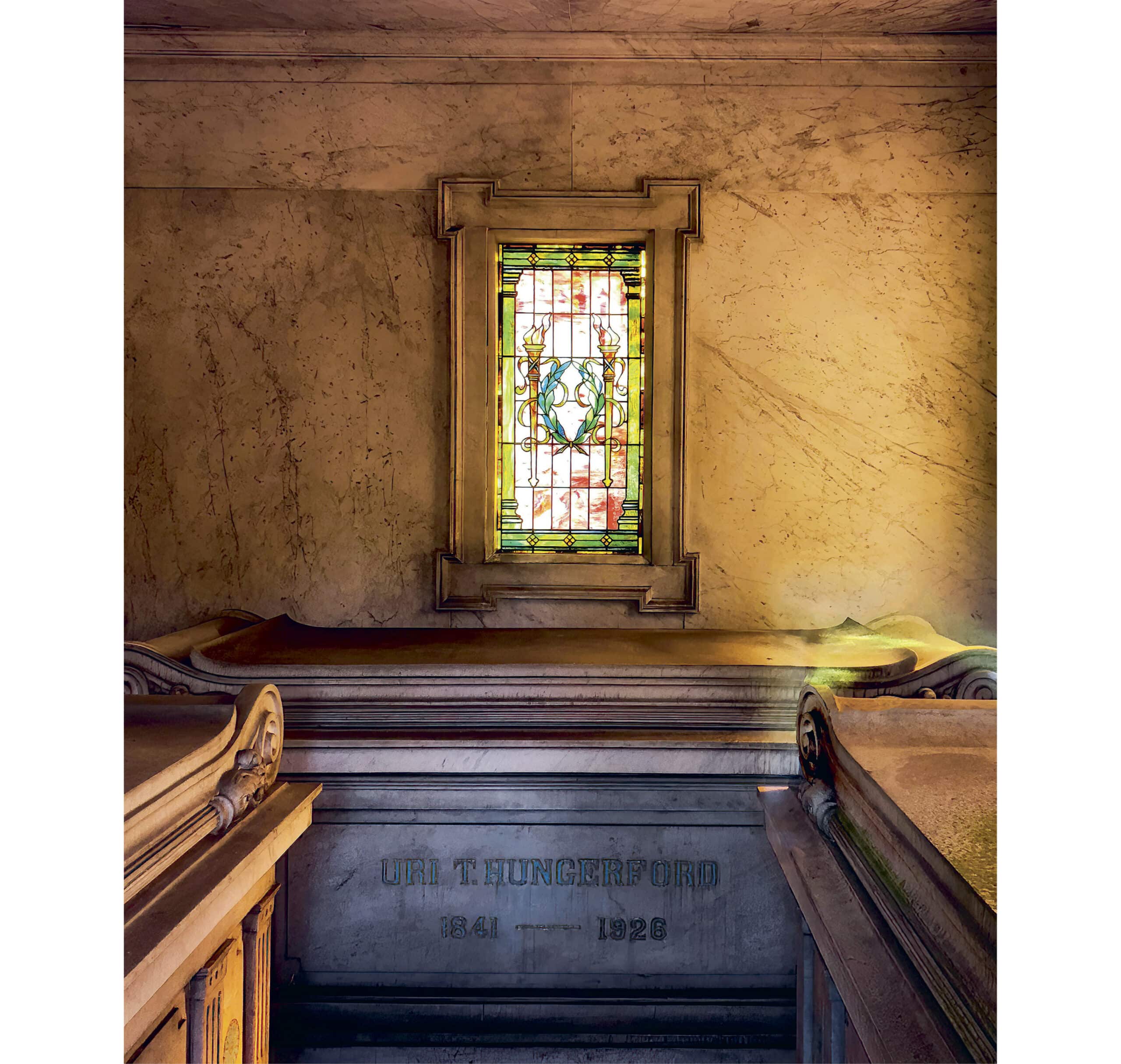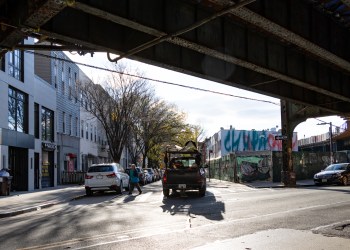Green-Wood Cemetery: The Place to Go When You’re Gone
A new book explores the symbolism and history of Green-Wood Cemetery, New York’s first landscaped open green space.

The Niblo Mausoleum, guarded by two lions, overlooks Crescent Water. Photos by Andrew Garn
Green-Wood Cemetery, founded in the late 1830s atop the once glacial terminal moraine and named after its natural beauty, was New York’s first landscaped open green space.
Inspired by European cemeteries such as Père Lachaise in Paris and wanting to grow the rural cemetery movement in the U.S. as perceptions of death changed, Henry E. Pierrepont spearheaded Green-Wood’s establishment and introduced the concept of burial in a landscaped garden to New Yorkers.

The 478-acre grounds between Park Slope and Sunset Park quickly became a popular destination, not just for burials but also as a place of leisure and contemplation. In the 1860s, it was second only to Niagara Falls in attracting crowds. Its success highlighted the growing need for public parks and open spaces in the increasingly developed city, foreshadowing the urban parks movement nationwide and paving the way for Central and Prospect parks.
The recently published “Brooklyn Arcadia: Art, History, and Nature at Majestic Green-Wood,” by photographer and author Andrew Garn and with guest essays by a range of writers, delves into the history, landscape, architecture, symbols, and other aspects of the national and city landmark, and explores why it remains such a beloved part of the borough.
At its establishment, Green-Wood Cemetery became a hugely significant place in Brooklyn for many of the reasons it remains so today: It offers natural beauty, wildlife, history, art, tranquility, and culture within the bounds of the city.
As Père Lachaise became “the place to go when you went,” as the book puts it, so did Green-Wood. Many prominent people are buried there, including Jean-Michel Basquiat, Leonard Bernstein, Susan Smith McKinney-Steward, and Boss Tweed.

As longtime Green-Wood Cemetery President Richard J. Moylan says in the book: “Everyone who was anyone in the 19th century sought eternal repose here. Renowned architects, artisans, and artists of the day vied for the privilege to create magnificent buildings and the final resting places for the rich and powerful, the famous and infamous. Green-Wood was ‘a virtual forest of Type A personalities,’ as the renowned preservationist Kent Barwick once remarked.”
Moylan, who has been president of Green-Wood since 1986, has a long connection with the cemetery, having as a child joined his father, who was responsible for cleaning and repointing historic monuments in the grounds, on work trips. During his tenure, it has welcomed the public with creative programming and education, including performances, tours, art installations, classes, historical archives, and environmental initiatives.
As visitors step through the Gothic arches off 25th Street, they hear chirping birds and feel a breeze degrees cooler than the air on the streets outside. The vast landscape of rolling hills is dotted with ornate tombstones, elaborate mausoleums, and striking sculptures, framing picturesque vistas of the city skyline.
But it wasn’t always as hospitable to the public as it is today. Professor of city planning history and the urban built environment at Cornell University Thomas J. Campanella, who writes a chapter in “Brooklyn Arcadia,” remembers visiting as a graduate student, “enthusiastic about a course I had taken on American landscape.” A guard took his camera from him and pulled out all the film.
“There was this whole, I think it was an urban myth, about how you couldn’t take photos because there were mob-related figures buried there. It made absolutely no sense,” he told Brownstoner, laughing.

Campanella views the cemetery as a landscape document that “tells stories in a way that even a storied landscape like Prospect Park can’t do, because you’ve got people there, you’ve got Leonard Bernstein, Basquiat.” Not only that, but it’s also a remarkable place full of sculpture and art, mixed with natural ecosystems that has a lot to do with the formation of Brooklyn, he said.
As well as delving into the history of the storied cemetery, “Brooklyn Arcadia,” through both photography and essays, explores the landscape through the seasons and its architecture, sculpture, statuary, and stained glass. Inanimate and living inhabitants, both winged and leaved, are examined, as are the experiences of visitors in one of Brooklyn’s most majestic open spaces. The book is a celebration of Green-Wood Cemetery, a destination for both the living and the dead.
Related Stories
- Green-Wood Visitor Center Rises Around Weir Greenhouse in Greenwood Heights
- Green-Wood Cemetery Fights Invasive Plant Species to Save Pond Life
- State Funding Brings Green-Wood Cemetery Closer to Funding Goals for New Visitor Center
Email tips@brownstoner.com with further comments, questions or tips. Follow Brownstoner on X and Instagram, and like us on Facebook.









What's Your Take? Leave a Comment